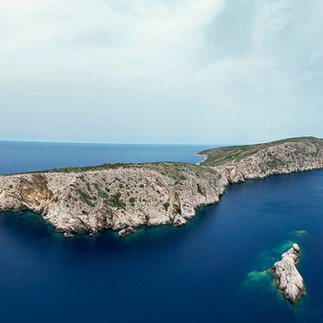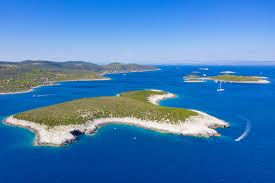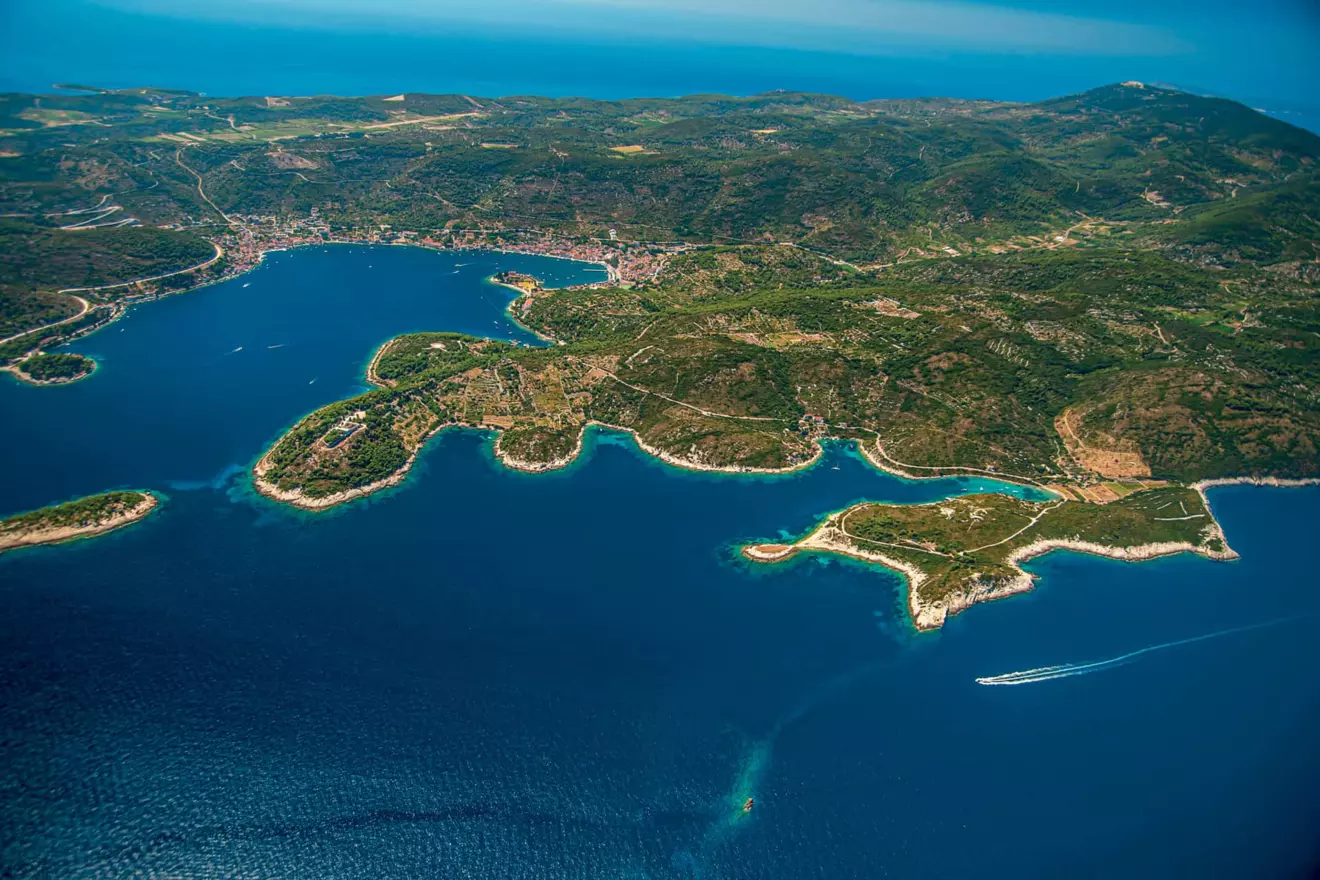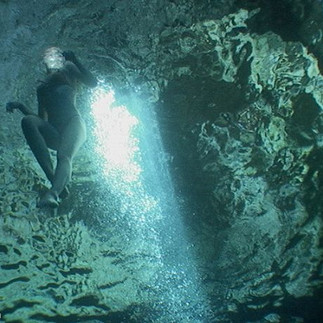A Magical Journey Through Croatia’s Blue, Green, and Monk Seal, Sea Caves
- Teo Drinkovic
- Sep 26
- 5 min read
Discover the Adriatic’s hidden wonders of Croatia Sea Caves — from Biševo’s shimmering Blue Cave to Ravnik’s glowing Green Cave and the mystical Monk Seal Cave

Introduction
When most tourists think of Croatia, the first images that come to mind are Dubrovnik’s stone walls, Hvar’s lively beaches, or Opatija’s elegant seafront. Yet few know about the mysterious underwater world of the Adriatic caves.
Among them, the most famous are the Blue Cave on the island of Biševo and the Green Cave on the islet of Ravnik. But if you truly want to understand this hidden world, you cannot skip the less celebrated, yet equally fascinating, Monk Seal Cave, also located on Biševo.
Together, these three caves form what locals and guides call the “Vis Cave Trilogy.” While the Adriatic coastline is full of underwater grottoes, this trilogy stands out as the crown jewel, an invitation into a realm of sea, light, marble, history, and tourism.
Islands of Biševo, Ravnik, and Vis
Source: Google.com
The Blue Cave — a Cathedral of Magical Light
On the eastern side of Biševo, in the tiny bay of Balun, lies one of Croatia’s most famous natural wonders: the Blue Cave. Biševo itself is a small rocky island just a few nautical miles from Vis, part of central Dalmatia’s archipelago.
What makes the Blue Cave world-renowned is its extraordinary optical phenomenon. Sunlight enters through an underwater opening, reflects off the cave’s sandy white floor, and refracts, filling the space with an intense silver-blue glow. Objects underwater appear to shimmer in an unreal metallic hue, almost ghostly.
The spectacle is most vivid between 11 a.m. and noon, when the sun is high and the sea calm. The cave stretches 24 meters in length, 10–12 meters in depth, and its interior reaches up to 15 meters in height. Since the cave is flooded, the only access is by boat.
Until 1884, the cave could only be entered by diving through the submerged natural passage, a secret known only to local fishermen.
On the advice of Baron Eugen von Ransonnet, an artificial entrance was carved into the rock, just 1.5 meters high and 2.5 meters wide. Boats must pass carefully, and visitors often have to duck down as they glide inside.
This limited entry is part of why the cave remains so carefully preserved. Visits today are possible only with licensed boats on organized tours. A short boat ride from Komiža takes about 15 minutes, but trips from Split or Hvar can take up to two hours depending on the sea conditions.
Inside, time is short — usually 5 to 15 minutes — but the experience is unforgettable: the hush of the oars, the silence of the cave, and then the sudden immersion into a blue world that feels like a ritual of light. During the summer, the waiting lines of boats can be long, but the moment is always worth it.
Source: Google.com
The Green Cave — the Glow of Ravnik
A short distance southeast of Vis lies the islet of Ravnik, home to the Green Cave, the second jewel in the Vis Cave Trilogy. While it is often mentioned alongside the Blue Cave, it has its own unique magic.
Ravnik is a protected natural landscape, and since 1967, the Green Cave has been classified as a geomorphological monument of nature. What sets it apart is the opening in its dome: a circular skylight that allows a beam of sunlight to pierce deep into the cave, creating an ethereal green glow on the water below.
The contrast between the darkness of the cavern, the black stone walls, and the luminous emerald light is breathtaking. Unlike the Blue Cave, the Green Cave is much larger, and its entrance is wide enough that boats can sail in without requiring passengers to stoop down.
During World War II, the cave was occasionally used as a hiding place for small naval vessels. Today, visitors can enter with rowboats or kayaks (motors are prohibited inside) and are allowed a short swim under the skylight.
Tourist visits are permitted between 9 a.m. and 5 p.m., subject to weather conditions, and stays inside are limited to around 10 minutes. Beyond the cave itself, the surrounding cliffs invite cliff jumping, climbing, and adventurous swims, making it a lively counterpoint to the meditative silence of Biševo’s Blue Cave.
Source: Google.com
The Monk Seal Cave — Mystery and Solitude
To complete the trilogy, we travel back to Biševo, this time to its southern side, where the Monk Seal Cave stretches some 160 meters into the rock, making it one of the longest sea caves on the Adriatic coast.
It is named after the Mediterranean monk seal, once its resident. These seals are now critically endangered and extremely rare, but the cave preserves their memory.
Unlike the dramatic light play of the Blue and Green Caves, the Monk Seal Cave offers a different kind of wonder, mystery, and solitude. Its entrance is narrow and almost vertical, making it difficult to spot from the sea. Inside, the echoing silence, underwater passages, and dim light create a haunting, almost sacred atmosphere.
Some tours even allow visitors to swim through a tight passage to reach a hidden pebble beach called Malo žalo. Because it is less visited than the other two, the Monk Seal Cave provides a quieter, more contemplative experience for travelers seeking intimacy with nature rather than spectacle.
Source: Google.com
Visiting the Caves — What to Know
Tours to the Blue and Green Caves are most often offered from Split, Hvar, Vis, or Komiža. Half-day or full-day excursions usually include multiple destinations, often combining beaches, villages, and other nearby attractions.
The best time to visit is from late spring through early autumn when the weather is stable. For the Blue Cave, the iconic light show is most intense around midday, while for the Green Cave, direct sunlight is also essential. Cloudy or rainy days dull the colors significantly.
Visitors should keep in mind that boat trips can be long, the Adriatic sun intense, and seas occasionally rough. Hats, water, sunscreen, and light protective clothing are not luxuries but necessities. Inside the caves, rules are strict: no independent motorboats, limited stay durations, and in some places, no diving or only regulated diving. This ensures that the fragile marine environment is protected.
Why These Caves Matter
The Blue, Green, and Monk Seal Caves together form the Adriatic’s most enchanting trilogy, blending geology, light, and sea into experiences unlike any stone town or beach resort. For travelers seeking more than Croatia’s famous cities, these caves reveal another side of the Adriatic, a hidden, mystical one.
Approached with respect for nature and mindful tourism, they are not just destinations but living, breathing spectacles of light and sea. To step inside is to feel the pulse of the Adriatic itself, reflected in blue, green, and silence.




























Feel free to comment!